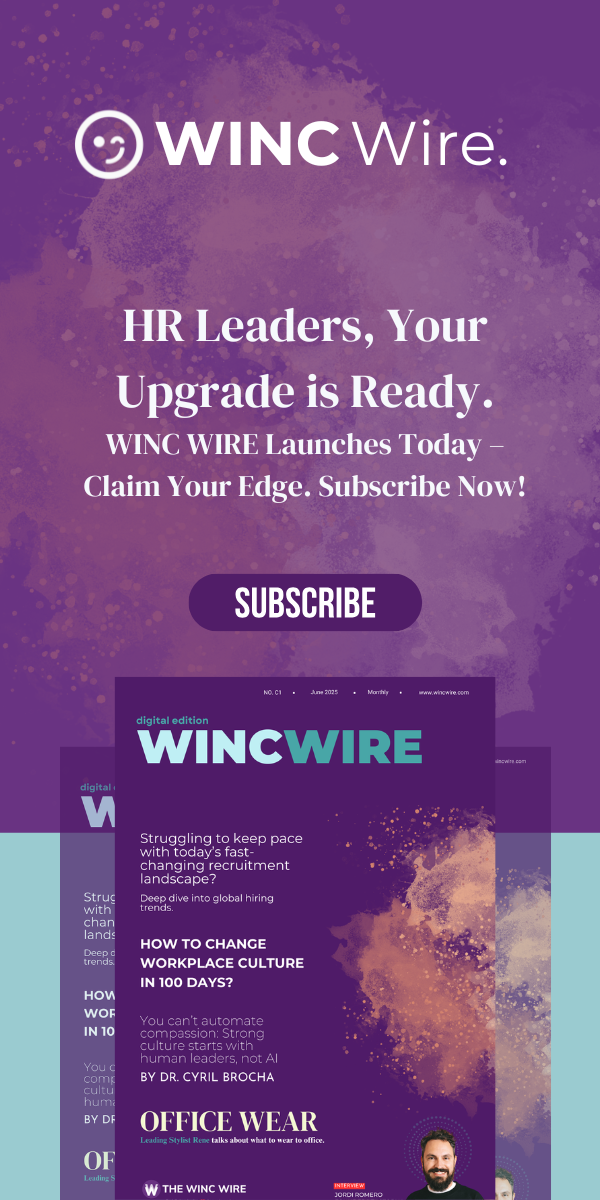In today’s world of relentless change, HR has outgrown its label as a ‘support function’. It’s now the strategic compass of every future-ready organisation, guiding cultural shifts, legislative adaptation, and the smart application of technology. From evolving workforce models to AI-led recruitment, HR leaders aren’t simply adapting — they’re leading the charge. This is the moment for HR to step out of the shadows and into its rightful role as the architect of change.
Let’s explore how HR can anchor transformation, champion human-centric progress, and help organisations navigate this evolving workplace landscape with purpose and precision.
From Back Office to Boardroom: HR’s Role in Driving Transformation
The workplace is no longer defined by stability, but by a rhythm of constant reinvention. In the face of legislative reform, hybrid work expectations, and shifting employee priorities, HR is uniquely positioned to harmonise disruption with clarity.
Legislation as a Catalyst, Not a Constraint
The UK’s forthcoming Employment Rights Bill signals one of the most profound shifts in employment law in a generation. Provisions like zero-hour protections and day-one parental rights aren’t merely legal updates — they’re a call to build fairer, more inclusive cultures.
Strategic HR responses must include:
- Policy Alignment: Refresh contracts, guides, and processes with legal precision.
- Stakeholder Education: Equip managers and boards with context and clarity.
- Risk Mitigation: Tackle compliance proactively to avoid reputational and operational disruption.
But beyond policies lies a deeper mandate — to ensure people feel seen, supported, and secure. Transparent communication and a people-first lens will be essential to keeping trust intact during periods of change.
Meeting the Moment: What Today’s Workforce Wants
Today’s employees seek more than a payslip. They want purpose, autonomy, and the freedom to work in ways that integrate with their lives. Flexible working is no longer an experiment — it’s the expectation.
HR Must Lead the Human-Centric Design Revolution:
- Designing Adaptive Roles: Craft roles that empower personal productivity while driving organisational value.
- Creating Cultures of Care: Move beyond token gestures. Embed mental wellbeing, inclusion, and psychological safety into the cultural DNA.
This isn’t about perks — it’s about building environments where people and performance grow in tandem.
Five Core Competencies: The Future HR Leader’s Toolkit
To lead in an era of transformation, today’s HR professionals need a new suite of capabilities — fusing emotional intelligence with digital dexterity and commercial clarity.
1. Emotional Intelligence (EQ)
True leadership begins with empathy. Active listening, emotional regulation, and relationship-building form the heart of people-first leadership.
2. Strategic Vision
HR leaders must look beyond the moment, aligning workforce decisions with long-term business outcomes and societal shifts.
3. Technology Fluency
From AI-powered hiring to predictive workforce analytics, tech fluency is a strategic imperative, not a specialist skill.
4. Business Acumen
Whether presenting to the board or reviewing cost-benefit analyses, HR must demonstrate ROI with credibility and clarity.
5. Change Navigation
HR is the calm in complexity — guiding teams through change with structured resilience, clear communication, and trust-building.
Blueprint for the Future: Building a Strategic HR Plan
Strategic HR planning is about preparing not just for next quarter, but for the next curve of change. It’s the discipline that transforms HR from operational to visionary.
Five Steps to Architect a Future-Ready HR Strategy:
- Audit Current Practices: What’s working? What’s misaligned? Define the baseline.
- Align with Business Goals: Ensure every HR initiative supports organisational ambition.
- Forecast Talent Needs: Predict future capability gaps using market data and internal insights.
- Implement with Purpose: Launch initiatives that balance people’s priorities with growth.
- Measure & Refine: Use metrics to learn, iterate, and evolve.
Done right, this approach enables HR to weave agility into the fabric of the business, unlocking adaptability as a competitive edge.
The Digital Springboard: Technology as an HR Accelerator
In the hands of the right HR team, technology is not just a tool — it’s a strategic enabler. Automation frees capacity; AI sharpens decision-making; analytics illuminate blind spots.
Game-Changing HR Tech Examples:
- AI Recruitment Platforms: Speed up shortlisting and improve candidate matches.
- Predictive Analytics: Forecast talent needs and mitigate attrition.
- Workflow Automation: Streamline payroll, onboarding, and compliance checks.
- Collaboration Suites: Power communication in remote and hybrid cultures.
These solutions don’t replace HR — they elevate it, allowing leaders to focus on what matters most: their people.
Redefining HR’s Value: From Cost Centre to Value Creator
To solidify its strategic seat, HR must show how its impact translates into outcomes. That means moving beyond soft metrics to data that resonates in the boardroom.
Metrics that Speak to Impact:
- Reduced Turnover: Quantify savings from retention strategies.
- Increased Engagement: Link morale to productivity and innovation.
- Absenteeism Trends: Show how well-being initiatives curb lost days.
- Internal Progression: Highlight cost-efficiency and agility in promoting from within.
- Employer Brand Equity: Use satisfaction scores and platforms like Glassdoor to illustrate cultural value.
When HR tells its story through evidence, it shifts from being perceived as operational to being indispensable.
A Call to Action: HR’s Defining Decade
We’re entering a defining decade for the profession. The choices HR makes now will shape not just individual companies, but the very nature of how we work, lead, and grow.
This is HR’s moment — not to maintain the status quo, but to orchestrate what’s next. By marrying strategic planning with empathetic leadership and digital fluency, HR can cultivate workplaces that don’t just survive uncertainty but flourish through it.
Let’s Lead the Change — Together
If these ideas resonate, consider this an invitation. Follow along as we explore what it means to lead with purpose, to manage with clarity, and to champion cultures of excellence.
Let’s not wait for the future of work to arrive. Let’s build it — with intention, with courage, and with our people at the heart.





